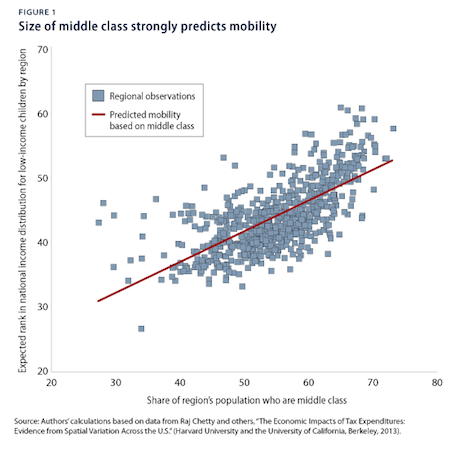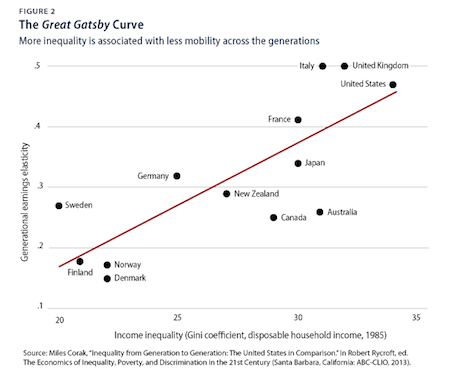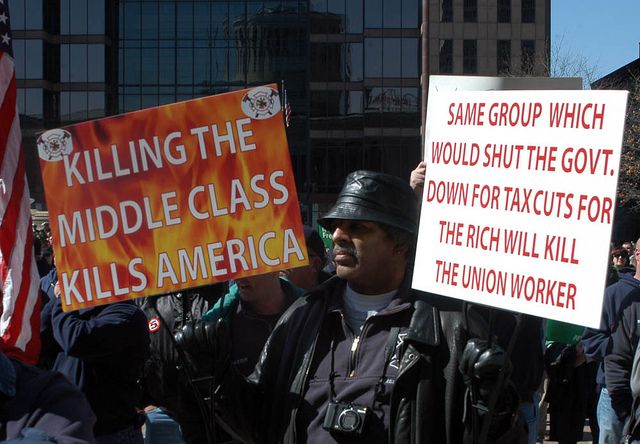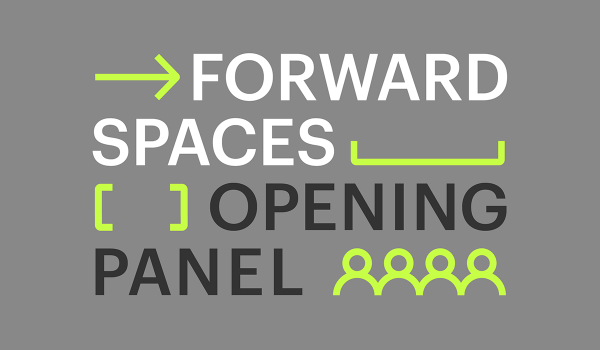Politicians like to talk about the middle class. It’s front and center in every campaign speech and State of the Union address. Every senator and congressman wants to come off a champion of the middle class because it’s our path to economic prosperity.
But it’s more than just ribbon cuttings at a new factory and monthly job reports. New research from the Center for American Progress suggests that a robust middle class means more economic mobility. Last month a huge study from Harvard found that geography was a strong indicator of economic mobility. Using the same data, Ben Olinsky and Sasha Post find that perhaps President Obama’s push for a middle-out economic approach is true.
“A low-income child who grows up in an area with a large middle class is likely to have more economic opportunities,” Olinsky told me. More than four in 10 children born in low-income families stay on that path. And close to four in 10 affluent children go on to lead affluent adult lives. Circumstance matters. And if you are lucky enough to grow up in a region with a large middle class, you’re going to have better odds of making more money than your parents did.

As you can see in the graph above, the larger the size of the middle class, the higher the expected rank in income distribution for children by region. Solinsky and Post write:
For example, imagine a city in which 40 percent of the population is in the middle class. According to the data, a child who begins in the 25th income percentile could expect to reach the 37th percentile when he or she turns 30. But if the city’s middle class were larger, say, 50 percent instead of 40 percent, then a low-income child could expect to end up in the 42nd percentile, making around $26,000 a year instead of $22,000 a year. That’s almost $4,000 in additional income — a 17 percent increase.
That’s a very detailed, stat-heavy way of saying that stump speeches about a strong middle class hold water, even if the politicians aren’t necessarily talking about economic mobility. Obama’s summer speech bonanza on the economy was all good and fine — it was refreshing to hear an elected official talk about something other than trickle-down economics — but how do cities and policymakers ensure that we actually build a larger middle class?
This question is at the heart of the New York mayoral race and other elections across the country. We have to make sure to keep the middle class in cities by figuring out avenues to improve schools and create affordable housing.
I often talk with friends who, like myself, are trying to carve out a middle-class life in urban enclaves, whether it’s New York or Detroit or Houston. The consensus: “What the hell are we supposed to do?” No one wants to move to the suburbs, traditionally the place where people flock for a middle-class life and good education that will give their children more economic mobility. And people in their 30s aren’t generally interested in living with four roommates and drinking at dive bars on school nights.
The emerging middle class in cities has its hands tied on education. Will young families in Detroit’s Woodbridge neighborhood or Brooklyn’s Crown Heights send their children to public schools, or will they opt to take on debt for private school tuition? Last week Allison Benedikt wrote at Slate that everyone should send their kids to public schools. It’s the only way to improve those schools and create equity. I agree with her. The more diverse an urban public school, the better it is for a given neighborhood.
So young, middle-class families — sorry, this isn’t exclusively the creative class — are often left with the question of how to bridge safety, education and affordability.
Infrastructure is a good place to start. I’ve written here before about how better access to mass transit is a good indicator of economic mobility. Lawmakers can start by investing in better forms of transit, from bus rapid transit to light rail. If the transportation is built in a smart fashion, it should mean more economic development along these new transit-rich corridors, which means more jobs and a larger tax base and (someday) maybe even better public schools.

Inequality breeds less mobility across generations.
I asked Post if there are any innovative policy measures that could jumpstart the middle class. He suggested that we look back in time. “Historically, we know how to build a bigger middle class,” he said. “Look, we’ve done it in the past and there are a lot of policies that policymakers have put into place, things like minimum wage. Right now there’s obviously a conversation about raising minimum wage, and I think that would be a really important policy measure. If you increase folks’ wages it would also help increase the size of the middle class.”
Obama has pushed for increasing minimum wage from $7.25 to $9 an hour. Fast food workers have been striking and protesting all summer to demand higher wages. In July, McDonald’s released a poorly planned budget for its employees suggesting they get a second job. Because the current minimum wage isn’t enough.
None of the policies are overnight solutions. But if we want cities to continue to grow and young Americans have the opportunities of previous generations, its time to get moving with the tools we have.
The Equity Factor is made possible with the support of the Surdna Foundation.

Bill Bradley is a writer and reporter living in Brooklyn. His work has appeared in Deadspin, GQ, and Vanity Fair, among others.

















